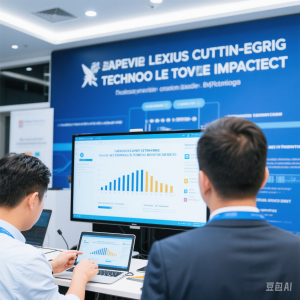Innovative Trends in Cutting – Edge Technologies

In the rapidly evolving landscape of technology, staying informed about the latest cutting – edge trends is crucial for developers and technology enthusiasts. This article delves into some of the most innovative and game – changing technologies that are currently shaping the digital world.
The Rise of Low – Code/No – Code Platforms and Their Implications
- Empowering Non – Technical Users
Low – code/no – code platforms have emerged as a revolutionary force in software development. These platforms allow individuals with little to no coding experience to create functional applications. For example, platforms like Bubble and Wix are enabling entrepreneurs and small – business owners to build their own web applications and websites without writing a single line of code. In the case of Bubble, users can visually design the user interface, define data structures, and set up business logic using a drag – and – drop interface. This has democratized software development, as non – technical users can now bring their ideas to life without relying on professional developers. It has also led to a significant increase in the number of applications being developed, as the barrier to entry has been greatly reduced.
- Implications for Professional Developers
For professional developers, low – code/no – code platforms are not a threat but an opportunity. These platforms can be used to speed up the development process of certain parts of an application. For instance, developers can use low – code platforms to quickly build the front – end user interface, while still leveraging their coding skills for more complex back – end development, such as integrating with existing systems or implementing custom algorithms. Moreover, developers can also contribute to the development of low – code/no – code platforms themselves, by creating plugins, extensions, or improving the underlying infrastructure. This synergy between traditional coding and low – code/no – code development can lead to more efficient and innovative software solutions.
Augmented Analytics: Transforming Data Analysis
- Automated Insights and Predictive Analytics
Augmented analytics combines artificial intelligence and machine learning with traditional data analytics. It enables automated data discovery, insights generation, and predictive analytics. For example, tools like Tableau Prep Builder with augmented analytics capabilities can automatically clean, shape, and enrich data. It can also identify patterns and relationships in the data, providing users with actionable insights. In a business context, a marketing team can use augmented analytics to analyze customer behavior data. The system can predict which customers are likely to churn and suggest personalized marketing strategies to retain them. This not only saves time for data analysts but also provides more accurate and timely insights for decision – making.
- Natural Language Processing in Analytics
Another aspect of augmented analytics is the integration of natural language processing (NLP). This allows users to interact with data analytics tools using plain language. For example, a business executive can ask a question like “What was the sales performance in the last quarter for our new product line?” in a natural language query interface, and the augmented analytics tool will provide the relevant data and analysis. This makes data analysis more accessible to non – technical stakeholders in an organization, as they no longer need to learn complex query languages. It also promotes a more data – driven culture within companies, as employees at all levels can easily access and understand data insights.
Blockchain – Based Decentralized Autonomous Organizations (DAOs)
- How DAOs Function
Decentralized Autonomous Organizations (DAOs) are organizations run by rules encoded as a computer program that is often transparent, controlled by the organization’s members and not influenced by a central government. In a DAO, decisions are made through a voting mechanism. For example, in a cryptocurrency – based DAO, members can vote on proposals related to the development of the cryptocurrency, such as changes to the protocol or the allocation of funds for marketing. The votes are recorded on a blockchain, ensuring transparency and immutability. This eliminates the need for traditional hierarchical management structures and allows for more democratic decision – making within the organization.
- Potential Impact on Various Industries
DAOs have the potential to disrupt various industries. In the finance sector, DAOs can be used to create decentralized lending platforms. Instead of relying on traditional banks, borrowers and lenders can interact directly through a DAO. The terms of the loan, such as interest rates and repayment schedules, can be determined through a voting process among the DAO members. In the creative industry, DAOs can be used to manage and distribute royalties for artists. A group of artists can form a DAO, and when their work is used, the revenue generated can be distributed among the members based on a pre – defined set of rules and voting decisions.
The Future of Biometric Technology in Security and User Experience
- Advanced Biometric Authentication Methods
Biometric technology is evolving rapidly, with new and more advanced authentication methods emerging. For example, in addition to traditional fingerprint and facial recognition, iris scanning is becoming more prevalent. Iris scanning offers a high level of accuracy, as the iris pattern is unique to each individual. In high – security environments, such as airports and government facilities, iris scanning is being used for access control. Another emerging biometric technology is voiceprint recognition. It can be used for secure voice – controlled access systems, such as unlocking smartphones or accessing sensitive information in a corporate setting. These advanced biometric methods provide enhanced security, as they are more difficult to forge compared to traditional passwords or PINs.
- Enhancing User Experience with Biometrics
Biometric technology also has the potential to greatly enhance the user experience. For example, in mobile devices, biometric authentication can be used to simplify the login process. Instead of typing in a password, users can simply use their fingerprint or facial recognition to unlock their devices. This not only saves time but also provides a more seamless and convenient user experience. In e – commerce, biometric technology can be used to authenticate users during online transactions. This can reduce the risk of fraud and make the shopping experience more secure and user – friendly.
Quantum – Safe Cryptography in the Face of Quantum Computing Threats
- The Threat of Quantum Computing to Traditional Cryptography
Quantum computing has the potential to break many of the current cryptographic algorithms. Quantum computers can perform certain calculations at speeds far beyond what classical computers can achieve. For example, Shor’s algorithm, which can be run on a quantum computer, can factor large numbers much faster than classical algorithms. This poses a threat to public – key cryptography, which is widely used for secure communication on the internet, such as in online banking and e – commerce. If a quantum computer were to be used to break the encryption keys, sensitive information could be compromised.
- Developing Quantum – Safe Cryptography
To counter the threat of quantum computing, researchers are developing quantum – safe cryptography algorithms. These algorithms are designed to be resistant to attacks from both classical and quantum computers. For example, lattice – based cryptography is one of the leading candidates for quantum – safe cryptography. It uses the mathematical properties of lattices to create encryption keys. Another approach is post – quantum cryptography, which encompasses a variety of new cryptographic techniques. As quantum computing technology continues to develop, the adoption of quantum – safe cryptography will become increasingly important to ensure the security of digital information.
In conclusion, these cutting – edge technologies are set to transform the technology landscape in significant ways. Developers and technology professionals need to keep a close eye on these trends to stay ahead in the digital age.




